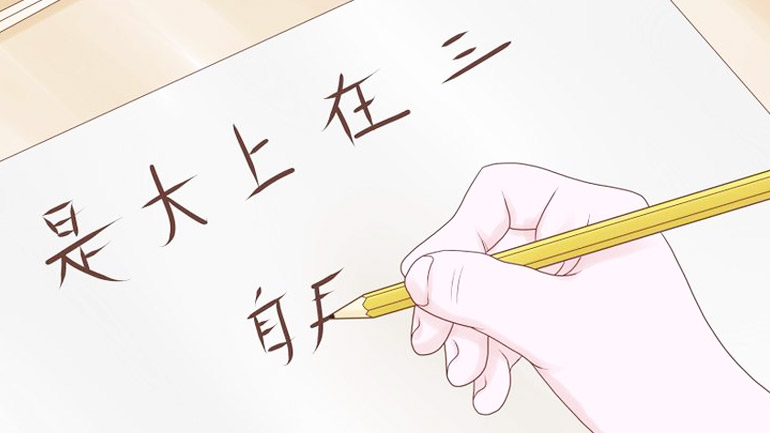
For most people, the majority of studying time is spent on things that require large chunks of time, such as going to class, reading books or talking with friends. These are usually not activities you perform for five minutes and then switch to something else. However, it's possible to spend a significant amount of time on studying without actually letting it encroach on any other things you're currently doing.
In a way, this is a way in which you can magically expand the time available, possibly by a great deal depending on how efficient you were before. Diversified learning is useful for everybody, but especially for those of you who aren't studying full time.
So what is diversified learning? It's simply spreading out whatever can be spread out, chopping it up into so small chunks that they can be easily handled in between other tasks. The old trick of writing things on your hands is a good example. It means that you might see a difficult character a hundred times over a few days, learning it without any focused effort being invested. This is just one example, and if you add up all the various strategies of diversified studying, it's possible to learn significantly more. The rest of this post will be dedicated to explaining various ways of doing this, please contribute by commenting and adding your own tricks!
Listen to recorded material – This is perhaps the most powerful method available.
Use spaced repetition software – Using some kind of spaced repetition software is essential but there are other choices as well.
Write difficult characters on your hands – We all have characters that just refuse to stick in our memories. Rather than spending precious time studying them at home or in class, write them on your hands!
Tape/write difficult characters where you can see them – This is very similar to the above method, but a bit more versatile. Let's say that you think it's tricky to remember characters containing 莫 (like 模, 摸, 寞, 幕, 慕, 墓, 暮), well then, make a comparison of these characters using what you know about mnemonics. Put this comparison close to some place where you tend to have extra time, the obvious places being next to your bed, in the bathroom and in the kitchen, just above the sink.
Use a smart phone and appropriate software – There are of course many ways to use smart phones to study Chinese, so it's rather a platform than a method in itself. Most importantly, it allows you to listen to more Chinese and it also allows you to study flashcards while waiting for the bus. This means that you can spend the time at home by your computer doing something else.
Changing languages – This trick is probably as old as they get, but changing the software language on your phone or computer is a nice way to become exposed to more Chinese. A warning is in place, however. Even though you will be able to use your phone in Chinese, you will need to be quite good at Chinese in order to learn how new functions work or to troubleshoot your computer. Make sure you can switch to English if you want to.
Taking notes – To practice writing, try taking notes in Chinese. This is obviously not a good idea when you're in a hurry, but let's say your going grocery shopping. Why not write the list in Chinese? If you don't know all the words, skip some or look them up. Even writing words you think are really easy will improve your overall writing ability.



 闽公网安备 35020302035673号
闽公网安备 35020302035673号
0 responses on "Use diversified learning to improve your Chinese"